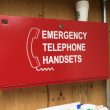Trailblazers
Since Hurricane Katrina, emergency responders’ need for reliable and interoperable communications systems again has become a top priority in Washington, D.C., where federal officials address the topic on a regular basis. Particularly among members of Congress, considerable attention is being focused on the projected cost of a nationwide network that would let appropriate personnel at the federal, state and local levels communicate during an emergency. And some of the estimates have been enormous, with projections ranging from $15 billion to $60 billion for such a solution.
But more disconcerting than such staggering figures is the notion that even this level of budgetary commitment might not yield the desired results. Numerous public-safety experts — most notably, those at SAFECOM — have noted that all the technology and money in the world will do little for interoperable communications unless the emergency responders are convinced that they should communicate with each other.
Without question, some progress is being made regarding interoperability, because the number of statewide public-safety communications systems continues to grow as state/local cooperation becomes more commonplace. But instances of federal/state/local cooperation are scarce, primarily because of a single fundamental reason.
“The history in every state is that the municipalities don’t trust the state, and the state doesn’t trust the feds,” said one industry source who requested anonymity.
But that’s no longer the case in Alaska, where federal, state and local emergency responders utilize the robust Alaska Land Mobile Radio (ALMR) network in a unique arrangement — sharing spectrum, infrastructure and costs — that gives hope that full nationwide interoperability is possible.
“Alaska is not leading edge, they’re the bleeding edge in terms of setting it up,” said Mark Corzine, senior product leader with the land mobile radio division of the U.S. Department of the Army. “It’s leading-edge technology, but it’s bleeding-edge management.”
The system
At the heart of the ALMR system is a spectrum-sharing agreement that calls for the federal government to donate high-band VHF channels for the mobile and portable units, while the fixed infrastructure transmits signals over state-owned spectrum (see graphic on page 61).
“That’s the biggest hurdle,” Corzine said, noting that it took the FCC two years to approve the arrangement, which was first pursued in 1997. “Once that hurdle is [cleared], you already have a lot of agreements in place, and a lot of trust is already built. Then, building the system is the easy part.”
Not that building ALMR has been a simple task. Given the rough terrain and harsh weather conditions, construction work must be completed within a six-month period during the year. Even in this window, there were multiple hazards to overcome, especially when trying to work on mountaintop sites accessible only by helicopter, said Mike Ball, Motorola project manager.
“We’ve had work stoppages for avalanches, volcanic eruptions, high winds and weather,” he said. “This is probably one of the most brutal environments I’ve ever worked in.”
Indeed, in some of the mountain ranges, sustained winds of 150 miles per hour are commonplace in some wind tunnels, Ball said. However, the availability of the mountaintop sites makes the trunked, Project 25-compliant system’s coverage particularly robust.
To ensure operability and interoperability, the ALMR’s system design consists of a “four pillar” approach: a fixed/infrastructure foundation, in-building coverage solutions, gateways to link disparate systems — even 700 MHz systems and encryption for each user — and a transportable solution that either can be used as a back-up site or to increase system capacity (see graphic on page 63), said Tim Woodall, ALMR program manager for the U.S. Department of Defense in Alaska.
“Technology really was the simplest of all the challenges,” he said. “With a standards-based approach, the technology issue was not all that difficult.”
Although the federal government is budgeted to pay 85% of the $151 million earmarked to construct the system, Woodall said the state contribution of pre-existing tower sites and spectrum was critical to making ALMR a reality.
Already operational and providing coverage along all of Alaska’s highways, the system is expected to be completed within three years to give emergency responders communications coverage throughout the vast state. Current projections indicate the system will be completed on time and well under budget.
“It worked out very well,” Woodall said. “The state benefits from the new technology, [and] all the other partners benefit from the access to the sites. We all benefit from the fact that we are on a single shared system that provides secure, on-demand, real-time interoperable communications.”
Indeed, ALMR’s shared-system approach not only generates more bandwidth for users at far less cost, but even routine planning sessions represent opportunities for valuable exchanges about interoperability scenarios, Ball said.
“These are the people who are going to save lives,” he said. “When these people who have their boots on the ground are talking about how they are going to communicate with each other with just the flip of a switch, you hear the excitement in their voices.”
Rule or exception?
Most important, ALMR works. The communications system received rave reviews after being tested during the military exercise in Aug. 2005, which included the FBI, the Federal Emergency Management Agency (FEMA) and the Coast Guard working alongside state and local first responders.
Given its affordability and effectiveness, ALMR has generated nothing but plaudits throughout the public-safety industry. But many of these ALMR fans express serious doubts that the Alaska system can serve as an interoperability model throughout the U.S.
“They have been able to come up with a good strategy that works for Alaska, and we should not discourage that,” said Harlin McEwen, chairman of the International Association of Chiefs of Police communications and technology committee. “I just want to make sure that everybody doesn’t jump to the conclusion that you could just take that and replicate it anyplace else. … It’s a unique situation.”
Ron Haraseth, director of automated frequency coordination for the Association of Public-Safety Communications Officials (APCO), said that the high-band VHF spectrum is so crowded in more populous states that an ALMR-like spectrum agreement would be virtually impossible to secure. The new 700 MHz spectrum that will be open to public-safety nationwide is a possible alternative, but using those frequencies would require about three times as many tower sites as a VHF system.
In addition, McEwen — who said ALMR makes “ultimate sense” — questioned whether the U.S. Department of Defense would share frequencies in the lower 48 states, citing numerous times the military has rebuffed public safety in past attempts to get the federal government to share its spectrum.
But Woodall and Corzine said public safety should reconsider its approach to the federal government on spectrum issues. Instead of seeking exclusive-rights agreements as in the past, public safety likely would be more successful proposing joint-system arrangements such as the one used for ALMR, Woodall said.
“If you approach the Department of Defense or other federal agency from the standpoint of sharing infrastructure, then sharing spectrum shouldn’t be an issue,” he said.
Another unique aspect of the Alaska effort has been the backing of powerful Sen. Ted Stevens (R-Alaska), who headed the Senate Appropriations Committee as federal funding for ALMR was needed.
“Senator Stevens was the one in Alaska who was driving that project,” Corzine said. “So you have a U.S. senator driving it, obviously bringing in U.S. federal dollars with an understanding from the state’s governor that the state would also pony up money.”
Indeed, getting such Capitol Hill support is critical to the success of any interoperability effort involving the federal government, Haraseth said, adding he learned that lesson first-hand when he tried to establish an ALMR-like network in Montana eight years ago. Although the idea was well-received at all staff levels, the absence of Congressional backing prevented the notion from becoming a reality at the time, he said.
“You’ve got to find some Congressional support that will put earmarked language in a bill that says, ‘Thou shalt spend your communications money in this area for this purpose, this way for this project,’” Haraseth said. “That enables the national spectrum managers to start participating and start spending their money on the project.”
But the most-cited difference between Alaska and states in the continental U.S. concerns the relationship state and local governments have with the federal government. In populous areas, many state and local officials work with large budgets, so they are not as dependent upon federal dollars. Furthermore, when in need of aid, they are more likely to seek it from a peer rather than the federal government.
That’s not the case in Alaska, where local, state and federal entities frequently help one another out of necessity.
“Just because of our great distance and relatively small population, our public-sector communities — state, federal and local — have always worked quite closely together,” said Trygve Erickson, director of wireless communication for the Anchorage Traffic Department. “So the idea that the federal government would partner with the state government to make something like this happen was less far-fetched here than elsewhere.”
Help wanted
Although getting myriad entities to agree on a plan is the primary task in any interoperability plan, ALMR officials have discovered that such arrangements do not necessarily result in smooth implementation, Woodall said. For instance, after state and federal government officials agreed to share spectrum for the system, it took two years to secure the necessary waivers from the FCC and National Telecommunications and Information Administration before deployment work could begin.
Another area of concern revolves around the cost-sharing agreements between the participating entities. Mechanisms exist for state and federal entities to exchange money for services during times of emergency, but no procedure exists for states to pay the federal government for an ongoing operation like ALMR. Consequently, the federal government currently is underwriting the ALMR system’s full $5 million annual operating costs while state agencies using the network escrow their share. It’s a situation that needs to change, Woodall said.
“If you’re going to share systems and share spectrum, you have to share costs,” he said. “The federal government needs to facilitate a process … to let federal, state and local agencies pool funds to pay for the operations and maintenance of the system.”
Woodall said the fact that ALMR is a P25-compliant system generally is a tremendous advantage, but using the standard has caused some headaches, as well. In addition to expressing hope that P25 radios drop in price, Woodall believes there should be an independent certification process to ensure that P25 equipment meets the standard’s specifications.
“We’ve run into product that was to be Project 25-compliant, but we found that it was not totally compliant,” he said. “Not to say that the manufacturer didn’t immediately fix it and address it — they were very sincere and very forthright in coming forward and correcting it — but the [customer] does have to perform its own test to ensure that the equipment does what it says it’s going to do, and that shouldn’t be. If you’re going to mandate a standard, then you should certify that standard.”
Where there’s a will …
All these problematic procedural issues are addressable, should those in power desire to make the necessary changes while utilizing several funding sources, all of which must focus on interoperability. ALMR is the first statewide system to tackle the federal/state/local interoperability issue, but similar potential exists for efforts in Hawaii, Wyoming and other less populous states.
“It requires senior-level leadership that believes in this process, provides the level of guidance and deals with the issues day to day, and provides the oversight we need to move together,” Erickson said, explaining why he believes ALMR has been successful. “And that follows through with their staffs.”
Corzine said he believes the ALMR experience provides a “boiler plate” for success that other systems can use to forge large-scale interoperability agreements that best fit their own scenarios.
“It depends on who wants to play and how they want to play together,” Corzine said. “People are going to ask, ‘Am I going to lose any power or control?’ Everyone has a little less control but, overall, they have better capability. Once you get past the egos, it all makes sense.”
Motorola’s Ball echoed this sentiment. “It [ALMR] definitely could be used as a model in other states,” he said. “My question is, ‘Why not?’”
Planning/partnerships/governance spectrum use shared resources
“First of its kind wherein an entire system is specifically dedicated to the sharing of VHF federal and non-federal spectrum by federal, state and local public-safety entities statewide.” -FCC MOO DA03-2612, Aug. 7, 2003
| NON-GOVERNMENT SPECTRUM | ||
| FCC | 154.65 MHz to 156.24 MHz FIXED TRANSMIT | |
| 120 CHANNEL PAIRS | ||
| NTIA | 138 MHz to 144 MHz MOBILE TRANSMIT | |
| GOVERNMENT SPECTRUM | ||
ALMR will converge VHF/700/800 and 4.9 GHz standards-based technologies
Source: ALMR Joint Program Office
ALMR’s technology implementation pillars
FIRST RESPONDER INTEROPERABILITY Day-to-day, mutual aid, joint task force
| Fixed infrastructure coverage | In-building coverage for critical infrastructure | Gateway for disparate radio systems | Transportable systems |
Standards-based communications for first responders SECURE, ON-DEMAND AND IN REAL TIME
Source: ALMR Joint Program Office

















